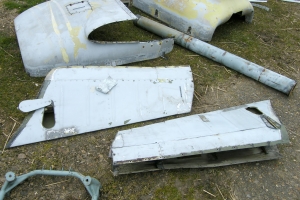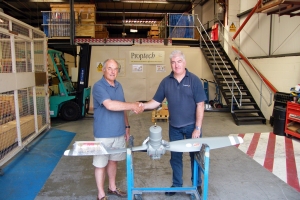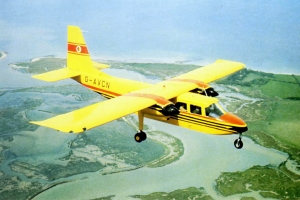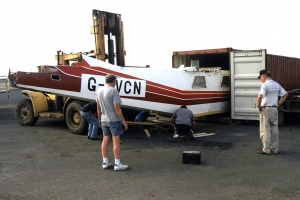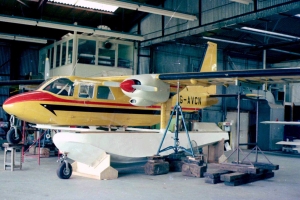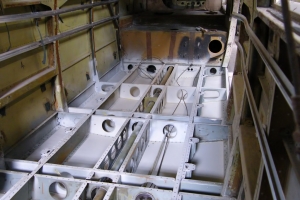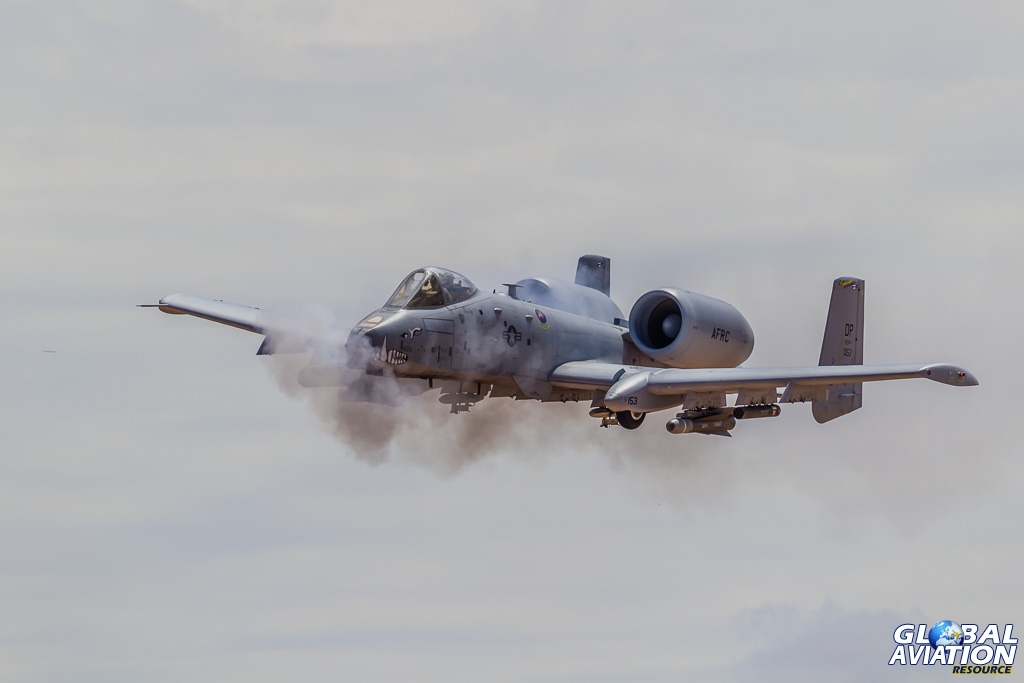The East Wight aircraft restoration workshop set up by the Britten-Norman Aircraft Preservation Society (BNAPS) has been a hive of activity as the restoration team made steady progress towards the goal of having the historic B-N Islander G-AVCN ready for “roll out” in time for the “Islander 50” celebration event in June 2015. Bob Wealthy guest reports for GAR.
B-N Islander G-AVCN, or “Charlie November”, is under restoration by the BNAPS as a high-quality static exhibit in a workshop alongside Bembridge Harbour that is in sight of the original hangar at Bembridge Airport where it was built in 1967. “Charlie November” is the first B-N production aircraft and is the oldest Islander in existence. The project to save B-N Islander “Charlie November” is seen as a tribute to the talents of John Britten and Desmond Norman and all who worked with them over the years to make the Islander a success and to ensure preservation of a part of Britain’s aviation heritage that is both unique and of great importance.
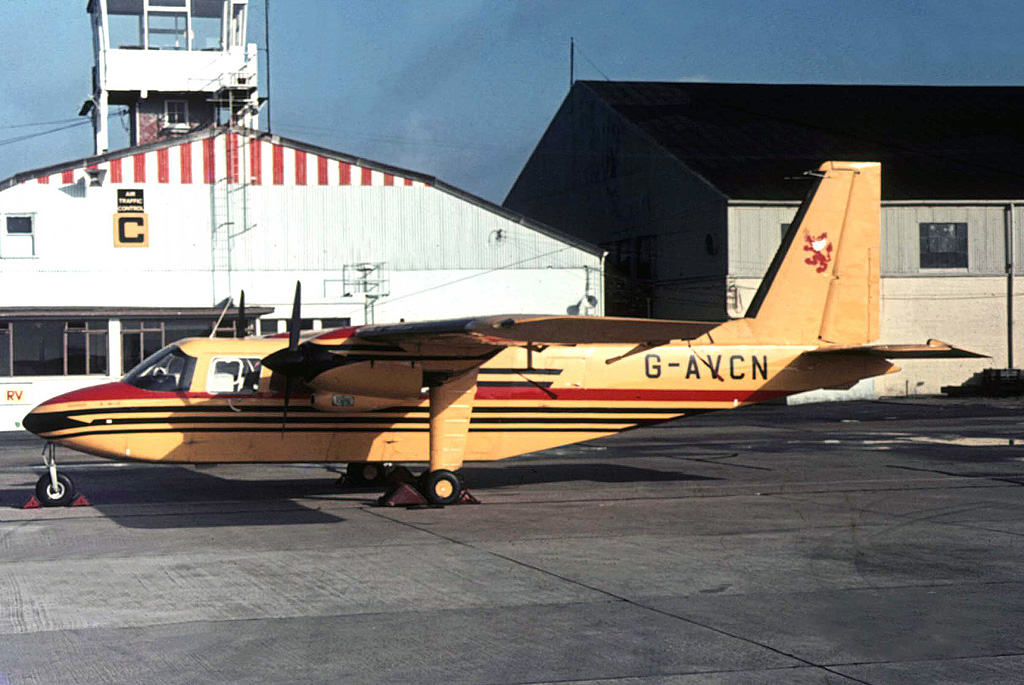
Following its delivery to Glos Air in August, 1967, BN-2 Islander G-AVCN emerged in early 1968 in the colours of the newly formed Channel Islands operator Aurigny Air Services. This aircraft operated the airline’s first passenger carrying flight on 1 March, 1968. © BN Historians/BNAPS
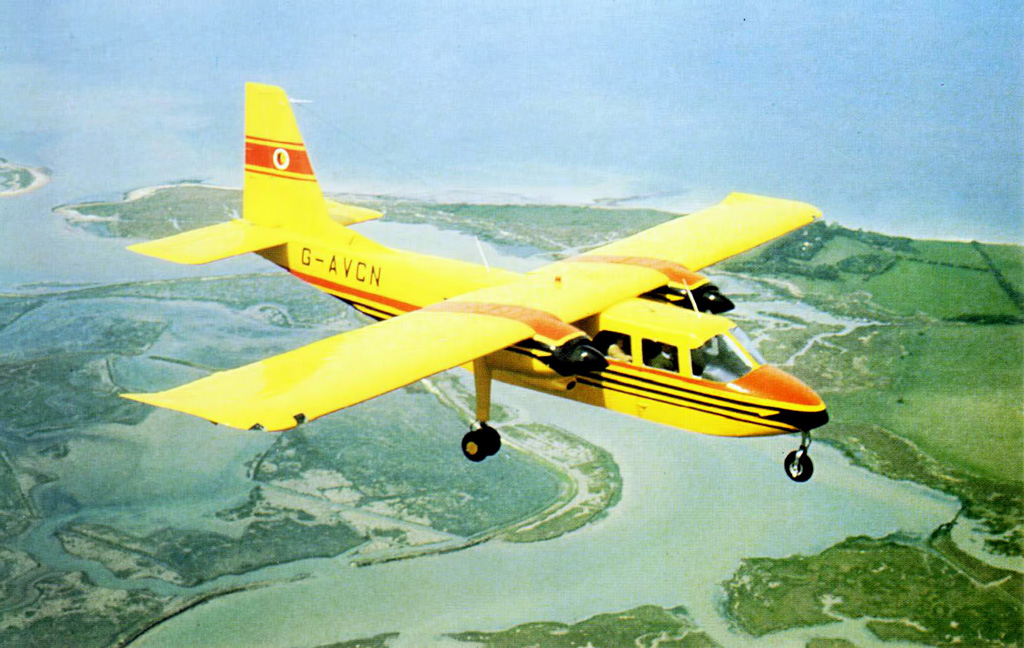
© BN Historians/BNAPS
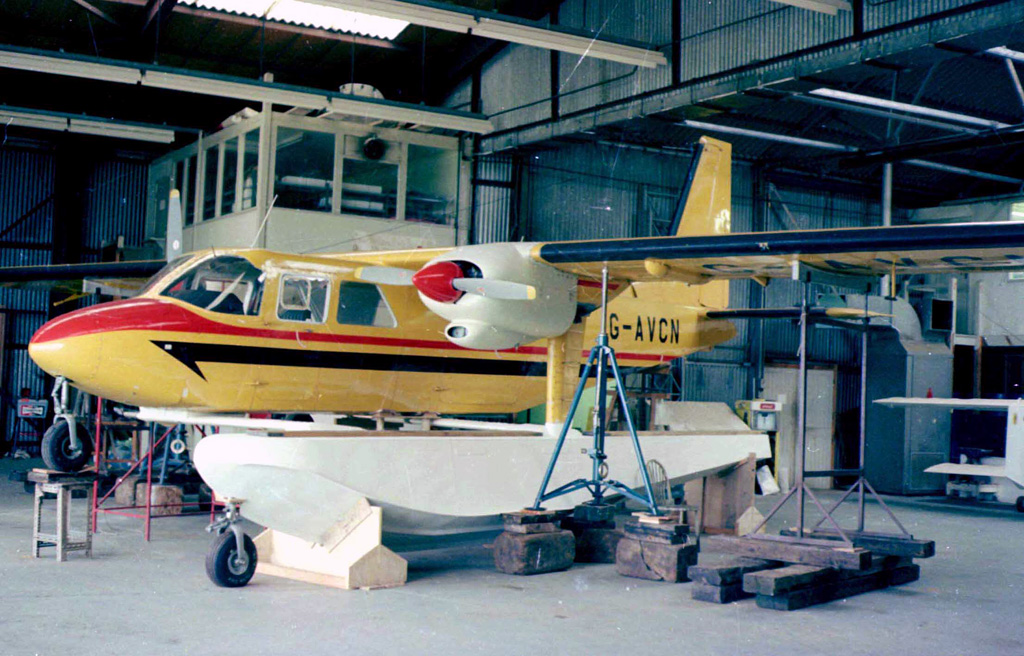
© BN Historians/BNAPS
After entering service with Aurigny Air Services on 1 March 1968, in August 1968 “Charlie November” returned to Bembridge to be converted to BN-2A standard. After more years of service with Aurigny, “Charlie November” was traded in and again returned to Bembridge to be used for the Islander amphibious version mock-up. Due to the weight penalty of the floats the amphibious Islander did not proceed and in November 1975 “Charlie November” was refurbished and converted to BN-2A-8 standard.
In January 1976 c/n 003 was delivered to Air Sport, St Jean, St Barthelemy as F-OGHG and subsequently passed through the hands of a number of operators in the region including: Caribe Aviation Socavia, Point–a-Pitre, Guadeloupe; Air St Barthelemy, St Jean, Barthelemy, and Air Caraibes, Point-a-Pitre, Guadeloupe.
In August 1991 c/n 003 was bought by Vieques Air Link, Vieques, Puerto Rico as N290VL and operated alongside the airline’s fleet of Trislanders on inter-island services. In July 1992 ownership was transferred to the Department of Natural and Environmental Resources, San Juan, Puerto Rico. In May 1998 N290VL was sold to Flamenco Airways, Culebra, Puerto Rico. However, shortly after this sale, N290VL was acquired by Air Charter, after Flamenco Airways entered receivership, and subsequently withdrawn from use and left in open storage at Isla Grande Airport, San Juan, Puerto Rico. The engines were removed and sold and it appeared that the remains of this historic aircraft would be left to rot.
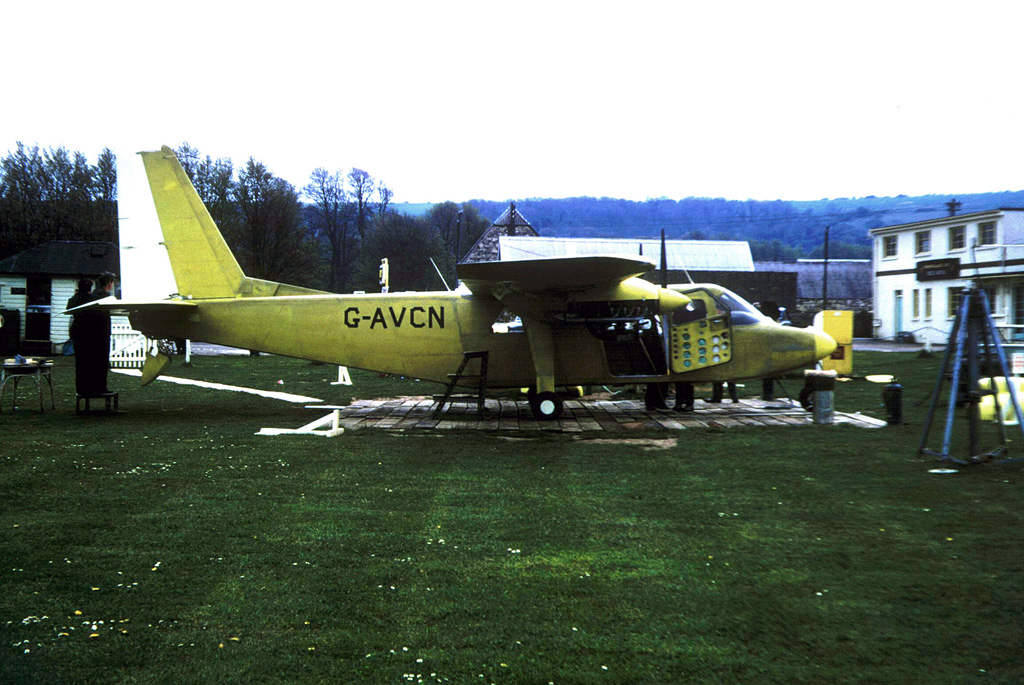
© BN Historians/BNAPS

G-AVCN, now with registration mark N290VL, in a derelict state at Isla Grande Airport Puerto Rico, late 1999. © BN Historians/BNAPS
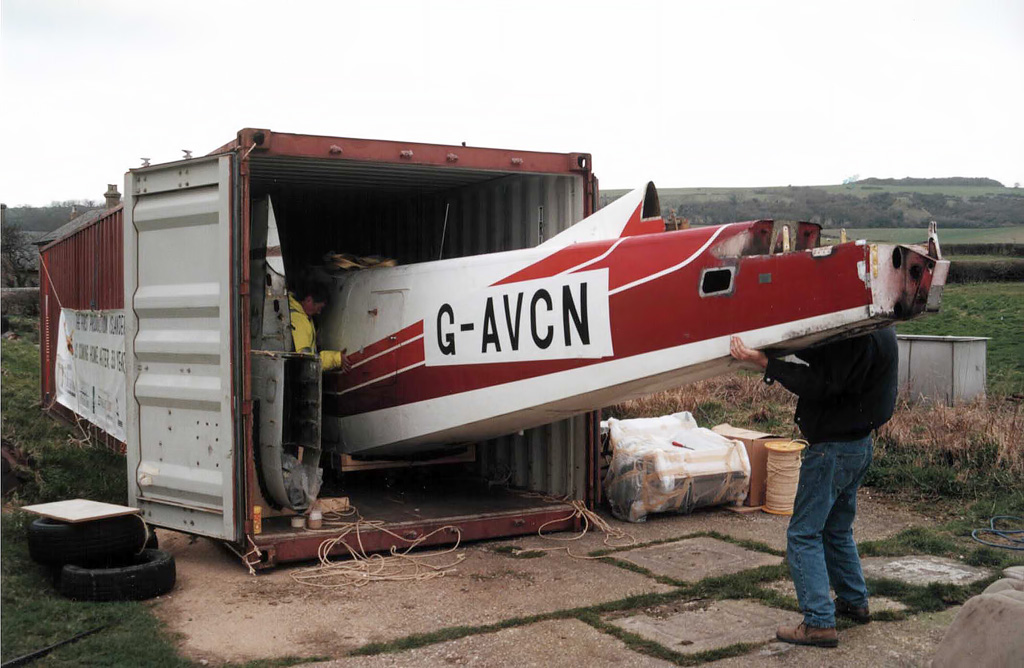
“Charlie November” travelled back to Bembridge in a 40 foot freight container and is seen here being unloaded in March 2000 © Bob Wealthy Collection
Following information received in the UK by Peter Graham and BN Historians, from contacts in Puerto Rico, that “Charlie November” was lying derelict at San Juan Isla Grande Airport, a recovery plan was devised and implemented. The recovery was a joint effort by Peter Graham and his company Airstream International Group with Allan Wright and Andy Clancey of BN Historians and Tim Barton, Service Engineer with B-N Group. With help from local contacts in Puerto Rico it appeared to be feasible to acquire the remains and get them back to the UK.
The recovery of “Charlie November” was supported by a number of sponsors. The work preparatory to full restoration had been made possible through the encouragement, generous technical assistance and facilities provided by B-N Group and enthusiastic support from several former B-N employees, including the late Peter Ward and the late Jack Griffin. Airstream International Group sponsored the dismantling and shipping of the aircraft from Puerto Rico in early 2000 as part of an ambitious plan to restore it to flying condition. Wightlink provided sponsorship for the final leg of the journey across the Solent to complete VCN’s return to its Isle of Wight home.
BNAPS was formed to carry the project forward (later to become BNAPS Trust, a Registered Charity No. 1100735). Despite the best efforts of all involved at the time, the work did not proceed as originally envisaged and for a number of years the aircraft components have been stored at the B-N Group’s Bembridge Airport factory.

17 July 2010, fuselage loading operations in progress in B-N car park, July, 2010. © Bob Wealthy Collection
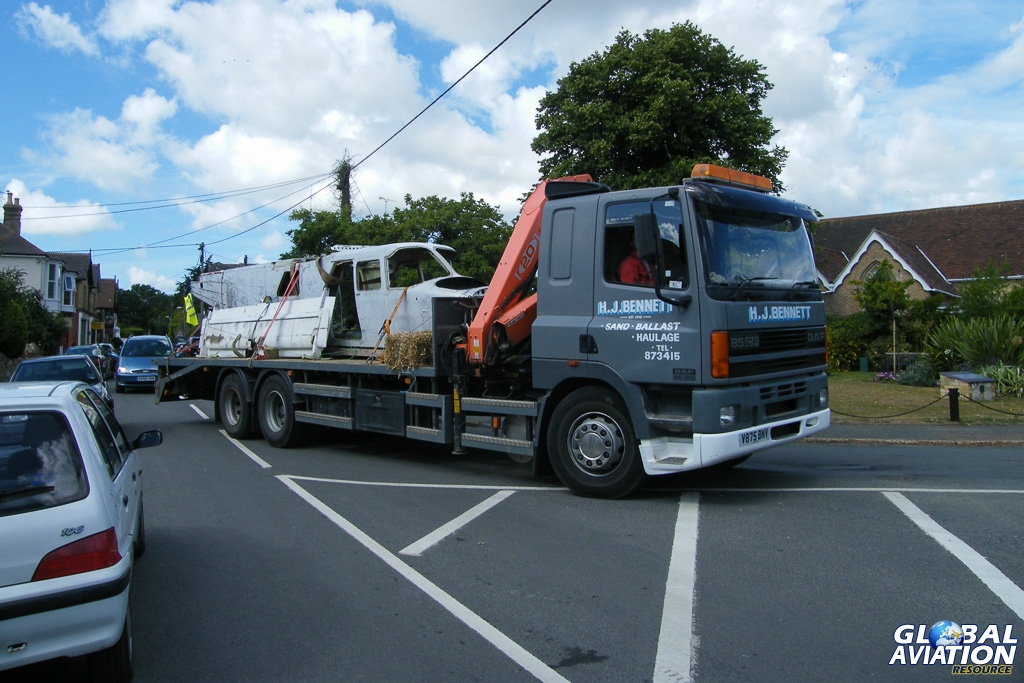
H.J. Bennett’s low loader negotiated tricky Bembridge Village centre with ease, July 2010. © Bob Wealthy

Finally the last of the multitude of component parts of “Charlie November” is loaded up. Left to right – Bob Wilson, Peter Gatrell, Tim Barton, Norman Hobbs and John Kenyon, July 2010. © Bob Wealthy
In recognition of the historic significance of Islander G-AVCN a working group was formed in May 2009 to see how best to re-start the project. It was decided that a new location should be found as the first priority. At one stage it was thought that a mainland facility could be a possibility. After several years of uncertainty the project entered a crucial second phase in the during 2010 when workshop facilities were found with the help of Bembridge Heritage Society in the East Wight for use as the restoration workshop and allow work to proceed.
A major milestone was achieved on 17 July 2010 when the dismantled aircraft was moved to the new site. In parallel with the initial work to survey and catalogue the aircraft components the plan to initiate a revised BNAPS supporters organisation and to set up a series of fundraising and presentation activities was devised to ensure that the project could be re-started.
Having secured VCN’s future, attention was turned to how the restoration work should proceed. Whilst a major programme of work was initiated at the Bembridge workshop, including electrical installations and other improvements to ensure that we had a suitable working environment, a detailed survey, condition assessment and cataloguing of all the component sections and detail parts was undertaken by the restoration team.

“Charlie November” inside the East Wight workshop in December 2010 © Bob Wealthy

Fuselage underside with the belly skin removed to enable under floor frames to be de-corroded and repaired, January 2013 © Bob Wealthy

BNAPS Restoration Team member, Rita Edgcumbe, is seen here applying etch primer to one of the passenger doors, the pilot’s door in the fore ground has already been painted, March, 2014 © Bob Wealthy
In addition the question of whether a restoration to fly was viable was investigated in conjunction with CAA contacts and advice from those closer to hand who had direct experience of the Islander’s design and construction. After some deliberation it was decided that the only practical course of action, in view of its historical importance and the overriding need to preserve its originality, together with financial and time constraint issues, was that of a high-quality restoration to static exhibition standard.
By the end of 2011, the position was that the survey and cataloguing work was near to completion, the workshop required the walls and floor to be painted together with some false flooring to be fabricated and laid in part of the workshop to eliminate some trip hazards arisng from the building’s previous use. By March 2012 all building work was complete and the next phase of the plan came into action by bringing all VCN components together in the one place from a nearby temporary store. By April 2012 the workshop had been organised to allow work to proceed with restoration of the fuselage together with moving in tools and workbenches that have in the main been donated to the project or have been provided by BNAPS supporters.
Over the past two years the restoration work has proceeded at a steady pace. Within the workshop the fuselage has received extensive attention to repair areas of damage and to de-corrode the external skin and under floor framing. A new floor has been made and installed, the nose landing gear brackets have been rebuilt. A major element of the work has involved a complete refurbishment of the instrumentation panel and associated flying and engine controls. Virtually all the necessary instruments have been acquired and these will be installed at a later stage. A simplified electrical wiring loom has been made using materials from the original loom to enable all internal and external lighting to be powered. Other work has involved de-corroding and etch priming the tail plane, fin, rudder and flaps together with preparation of the pilot’s door and the two passenger’s doors with etch primer ready for painting.
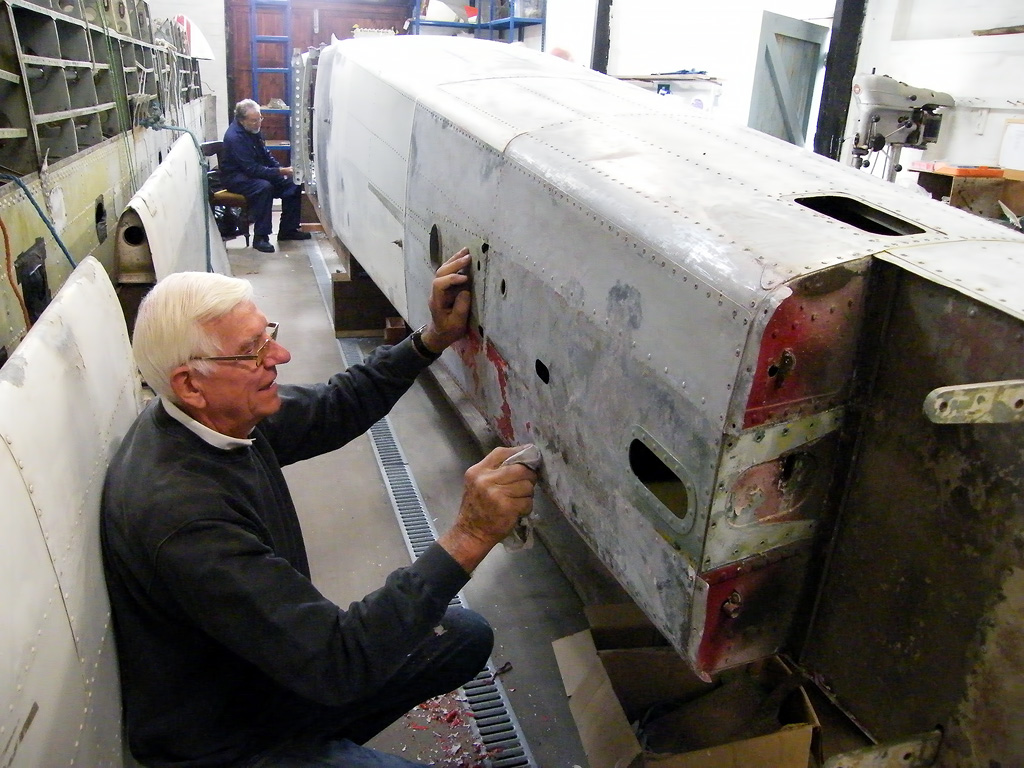
© Bob Wealthy Collection
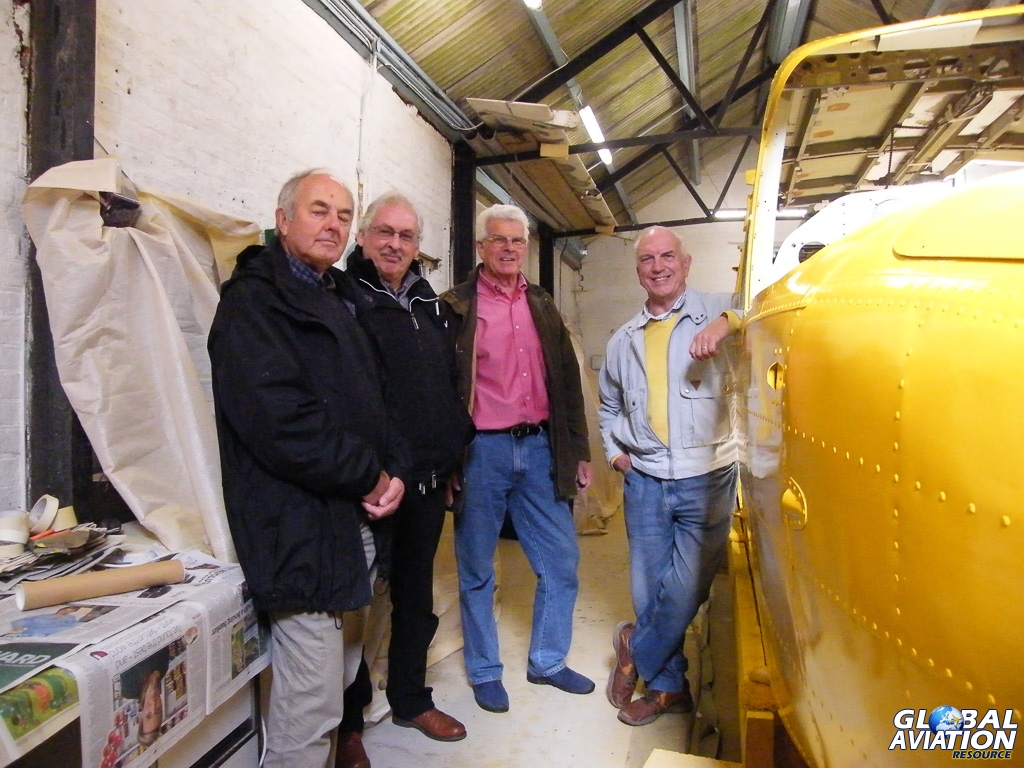
BNAPS Trustees, left to right Bob Wealthy, Peter Graham, Bob Wilson and Guy Palmer, view VCN’s painted fuselage, October 2014 © Bob Wealthy

The fuselage of restored Islander G-AVCN is seen here in March 2015 with nose cone and avionics bay cover fitted © Bob Wealthy
At the end of September 2014, the fuselage was prepared and ready for spray painting in its top coat of Aurigny yellow. This represented a major milestone for the restoration project. This was followed by installation of the doors and windows. The work also involved complete reconstruction of the instrumentation panel and associated flying and engine controls. The correct instruments have been acquired and installed and a simplified electrical wiring loom made using materials from the original loom to enable all internal and external lighting to be powered. Control wheels and control linkages, instruments and nav/com units are now in place and electrical power applied. Windscreens will be installed when all electrical power system checks have been completed.
The workshop will then be re-arranged with the fuselage to one side and the wing in its vertical stands moved into a position such that there is adequate access to allow repair and refurbishment work to proceed.
Phase 2 of the project will get the aircraft ready for final assembly in Phase 3. The major activity for Phase 2 is refurbishment and repair of the wing together with refurbishment of the landing gear, engine cowlings, engine and main undercarriage leg fairings. Phase 2 work on the tail plane, fin and rudder, elevator, flaps and ailerons has already been under way in parallel with Phase 1 activities. Support from a number of organisations has been generous. Surplus parts have been donated by B-N Group, Isles of Scilly Skybus, Cormack Islander Aircraft and Saywell International and others. Two propellers have been refurbished to exhibition standard by Portsmouth based propeller overhaul specialists, Proptech, and are now stored ready for future use. Two non-functional Lycoming O-540 engines are being constructed by Norvic Aero Engines at their St Neots works with planned delivery later in 2015.

Some of the Restoration Team get ready to move the fuselage upright so that the sides could be spray painted, October 2014 © Bob Wealthy
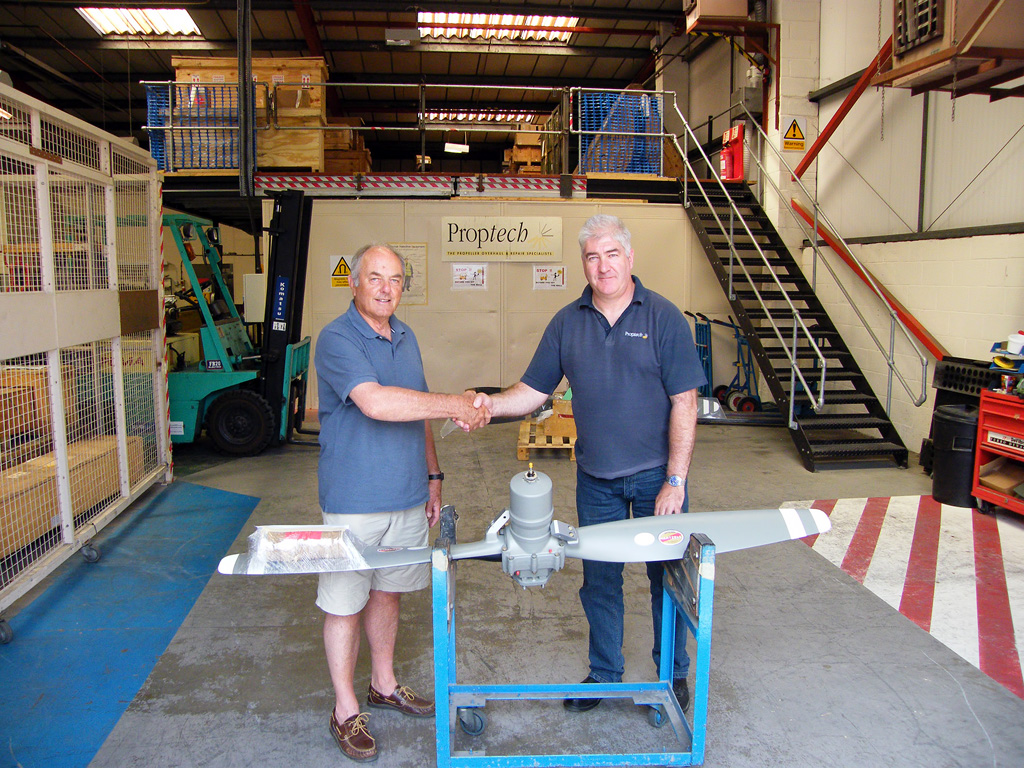
Proptech’s Customer Support Engineer, Alistair Mant, (right) hands over the first exhibition standard propeller to BNAPS’s Bob Wealthy, July 2013. © Bob Wealthy Collection

Non-functional Lycoming 540 engine being assembled in Norvic Aero Engines works at St Neots, June 2014.
G-AVCN, as the first production Islander and the first aircraft operated by Aurigny Air Services on 1 March 1968, has been recognised as an aircraft of historic significance by the British Aviation Preservation Council. At the end of 2014 the project received the Ron Wilsden award from the Transport Trust in recognition of the high quality of the restoration work. The restored Islander will be a tribute to John Britten and Desmond Norman and all who worked with them and the B-N Company over the years to make the Islander an outstanding success for the British Aviation Industry.
The restored fuselage of VCN, now painted in its Aurigny Air Services yellow top coat and fitted out with instruments and controls as a “work in progress” exhibit, was on show at the “Islander 50” event held at Bembridge Airport in June, 2015. Restoration of the rest of the airframe continues and for more information please contact BNAPS on 01329 315561 or by e mail: solentaeromarine@hotmail.co.uk





